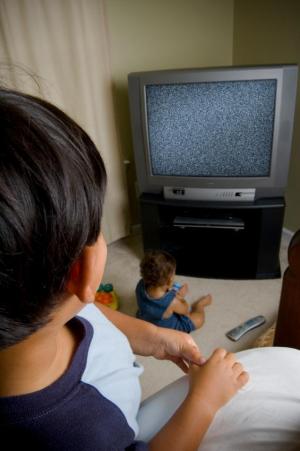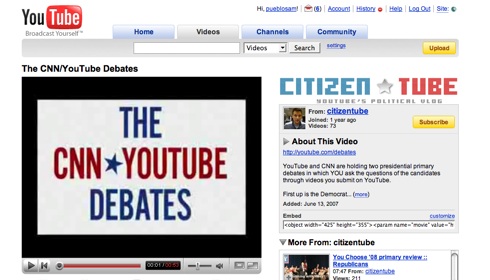 The best arguments appeal to both reason and emotion. But if you have to choose one over the other, data-supported arguments that appeal to logic and reason are usually preferable. And while the idea of math is frightening to many mass communication students, the preferred method of creating and sustaining a rational argument involves the use of statistical analysis. So whether you’re taking my Audience Research class, or Marketing Research, or you’re thinking about signing up for Sport Writing and Statistics class offered this fall…sooner or later you’ll be face to face with stats. But that doesn’t have to be a bad thing. Thinking and reasoning with numbers can be an extremely valuable skill set to bring to a potential employer, and once you get over the initial “fear of math” you may even find that you like it.
The best arguments appeal to both reason and emotion. But if you have to choose one over the other, data-supported arguments that appeal to logic and reason are usually preferable. And while the idea of math is frightening to many mass communication students, the preferred method of creating and sustaining a rational argument involves the use of statistical analysis. So whether you’re taking my Audience Research class, or Marketing Research, or you’re thinking about signing up for Sport Writing and Statistics class offered this fall…sooner or later you’ll be face to face with stats. But that doesn’t have to be a bad thing. Thinking and reasoning with numbers can be an extremely valuable skill set to bring to a potential employer, and once you get over the initial “fear of math” you may even find that you like it.
All of us use statistical reasoning on a regular basis…whether we acknowledge it or not. We talk about averages, percentages and even probabilities. Given a sequence of numbers we can spot a trend and most of us know about the basic concepts of central tendencies and variance…even if we don’t know the lingo. If you are going to be a news reporter or editor you’ll need to know how to write about events using statistical concepts that your audience will understand. Simple stats turn confusing sets of numbers into understandable concepts. For example, sports statistics such as FG% and RBIs reduce a pile of data into simple numbers that are easier to understand and compare. According to stats.com, Davidson’s Stephen Curry ended the season with 25 points against Kansas for a season average of 25.9 PPG and a 3P% (three-point-shot percentage) of 44.8%. There’s even an online stats resources that uses sports and exercise science examples to teach statistical concepts.
On 60 Minutes this evening, Morley Safer filed a report about Bill James, a statistician for the World Champion Boston Red Sox. The segment illustrated the importance of statistical analysis when making critical decisions. So whether you’re a media content creator or consumer, a sports fan or reporter, a basic understanding of stats will serve you well in the long run…and in the short term it may even increase your GPA.


 A couple of studies recently published confirm what we’ve suspected. Screen time and obesity are positively correlated. And the news gets worse. A study out of Canada found that children from disadvantaged neighborhoods were 3-4 times more likely to fall into these high-risk groups. Another study, this one out of SUNY Buffalo, found that kids whose screen time was reduced lost weight. According to a report in
A couple of studies recently published confirm what we’ve suspected. Screen time and obesity are positively correlated. And the news gets worse. A study out of Canada found that children from disadvantaged neighborhoods were 3-4 times more likely to fall into these high-risk groups. Another study, this one out of SUNY Buffalo, found that kids whose screen time was reduced lost weight. According to a report in  Samantha Power is no longer an adviser to Barak Obama. Another casualty of the war of words being raged in the quest for the Whitehouse, Ms. Power went a tad too far in her assessment of the Senator from New York–too far, that is, for a spokesperson for the campaign that is trying hard to avoid politics as usual.
Samantha Power is no longer an adviser to Barak Obama. Another casualty of the war of words being raged in the quest for the Whitehouse, Ms. Power went a tad too far in her assessment of the Senator from New York–too far, that is, for a spokesperson for the campaign that is trying hard to avoid politics as usual. There’s a new feel-good reality TV show in town. Imagine a cross between The Apprentice, Extreme Makeover: Home Edition, and The Amazing Race and you’ve pretty much got The Big Give. The similarities with the other reality TV shows are both an admission that certain formulas work, and the fact that the executive producer of TBG is also the executive producer of TAR. The Emmy-winning Bertram von Munster got his start with the long-time reality TV show COPS, but made his mark with the four-time-Emmy-winning Amazing Race. I had a chance to meet von Munster at the BEA/NAB conference a few years ago and was impressed with his producing skills. He has figured out how to create drama without stooping to the contrived interpersonal conflicts so common to the reality TV genre.
There’s a new feel-good reality TV show in town. Imagine a cross between The Apprentice, Extreme Makeover: Home Edition, and The Amazing Race and you’ve pretty much got The Big Give. The similarities with the other reality TV shows are both an admission that certain formulas work, and the fact that the executive producer of TBG is also the executive producer of TAR. The Emmy-winning Bertram von Munster got his start with the long-time reality TV show COPS, but made his mark with the four-time-Emmy-winning Amazing Race. I had a chance to meet von Munster at the BEA/NAB conference a few years ago and was impressed with his producing skills. He has figured out how to create drama without stooping to the contrived interpersonal conflicts so common to the reality TV genre. Looking back at the 2008 Presidential Race historians and media critics are likely to note some dramatic shifts. One is the increased interest and participation on the part of young voters. The second, and clearly related, phenomenon is the use of new media technology by the candidates, their supporters, and their detractors. One example of consumer-generated new media in a supporting role is the
Looking back at the 2008 Presidential Race historians and media critics are likely to note some dramatic shifts. One is the increased interest and participation on the part of young voters. The second, and clearly related, phenomenon is the use of new media technology by the candidates, their supporters, and their detractors. One example of consumer-generated new media in a supporting role is the  Sunday night will be the 80th anniversary of the little annual party known as the Academy Awards. The Academy is the Academy of Motion Picture Arts and Sciences…quite a mouthful…which is why people refer to the show as “The Oscars.” So who is Oscar? Oscar is the name of the 13.5-inch, 8.5 pound statuette that is given to each awardee. According to the AMPAS website the statuette, “depicts a knight holding a crusader’s sword, standing on a reel of film with five spokes, signifying the original branches of the Academy: Actors, Writers, Directors, Producers and Technicians.” Approximately 6,000 Hollywood professionals make up the Academy and vote for the nominees.
Sunday night will be the 80th anniversary of the little annual party known as the Academy Awards. The Academy is the Academy of Motion Picture Arts and Sciences…quite a mouthful…which is why people refer to the show as “The Oscars.” So who is Oscar? Oscar is the name of the 13.5-inch, 8.5 pound statuette that is given to each awardee. According to the AMPAS website the statuette, “depicts a knight holding a crusader’s sword, standing on a reel of film with five spokes, signifying the original branches of the Academy: Actors, Writers, Directors, Producers and Technicians.” Approximately 6,000 Hollywood professionals make up the Academy and vote for the nominees.